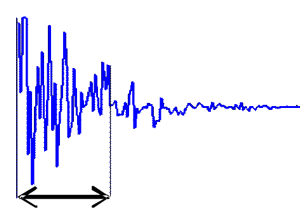Channel shortening equalizer for multi-access TH-UWB in the presence of multipath and multiuser interference
DOI:
https://doi.org/10.3103/S0735272717080027Keywords:
ultra wideband, UWB, channel shortening equalizer, CSE, RAKE receiverAbstract
In this paper a novel channel shortening equalizer (CSE) for time hopping ultra wideband (TH-UWB) multiple access system with pulse position modulation (PPM) is presented. As UWB channels have very long impulse responses as compared to the narrow pulse width, CSE can reduce the number of correlators. In UWB systems, due to the received pulse that is very similar to the channel impulse response (CIR), the proposed algorithm maximizes the shortening signal to inter-symbol and multiuser interferences ratio (SSINR), defined as the ratio of the received signal energy inside the desired window to the energy in the wall and multiuser interference. The existence of the proposed CSE before correlation receiver decreases the complexity of the receiver architecture by significantly reducing the number of effective channel taps. Further we extend our method to derive general expression for the bit error rate (BER) performance in the presence of inter-symbol and multiuser interferences. Computer simulation results are provided to compare the performance of the proposed method with a MSSNR CSE, lower bound, also known as All-Rake, Partial-Rake, and Selective-Rake in terms of Rake operational temporal windows and BER.References
YANG, L.; GIANNAKIS, G.B. Ultra wide band communication: An idea whose time has come. IEEE Signal Proc. Mag., v.21, n.6, p.26-54, 2004. DOI: https://doi.org/10.1109/MSP.2004.1359140.
HAZRA, R.; TYAGI, A. Cooperative impulse radio ultra-wideband communication using coherent and non-coherent detectors: A review. Wireless Pers. Commun., v.77, n.1, p.719-748, 2014. DOI: https://doi.org/10.1007/s11277-013-1533-x.
DUBROVKA, F.F.; TRETIAKOV, V.O. Spectral efficiency analysis of digital signals for 3.1-10.6 GHz ultra-wide-band radio systems. Radioelectron. Commun. Syst., v.54, n.9, p.465, 2011. DOI: http://dx.doi.org/10.3103/S0735272711090019.
WIN, M.Z.; SCHOLTZ, R.A. Ultra-wide bandwidth time-hopping spread-spectrum impulse radio for wireless multiple-access communications. IEEE Trans. Commun., v.48, n.4, p.679-691, 2000. DOI: https://doi.org/10.1109/26.843135.
FANG, L.; ZAILU, H. Low complexity multi-user detectors of TH-PPM UWB system. Proc. of Int. Conf. on Wireless Commun., Netw. and Mob. Comp., 26 Sept. 2005, Wuhan, China. IEEE, 2005, p.320-323. DOI: https://doi.org/10.1109/WCNM.2005.1544041.
ZHANG; L.; YANG, C. Performance analysis of channel shortening of RAKE receiver in ultra-wideband systems. Proc. of 64th Veh. Tech. Conf., VTC, 25-28 Sept. 2006, Montreal, Que., Canada. IEEE, 2006, p.1-5. DOI: https://doi.org/10.1109/VTCF.2006.166.
ZHANG; L.; YANG, C. The equalization performance of RAKE receiver in UWB system. Proc. of 7th Int. Conf. on Sig. Process., ICSP, 31 Aug.-4 Sept. 2004, Beijing, China. IEEE, 2004, p.1723-1726. DOI: https://doi.org/10.1109/ICOSP.2004.1441667.
HUSAIN, S.I.; YUAN, J.; ZHANG, J. Rake performance after channel shortening by decay factor optimization in UWB channels. Proc. Of 66th IEEE Veh. Tech. Conf., VTC, 30 Sept.-3 Oct. 2007, Baltimore, USA. IEEE, 2007, p.1204-1207. DOI: https://doi.org/10.1109/VETECF.2007.259.
CASSIOLI, D.; WIN, M.Z.; VATALARO, F.; MOLISCH, A.F. Performance of low-complexity RAKE reception in a realistic UWB channel. Proc. of IEEE Int. Conf. on Commun., ICC, 28 Apr.-2 May 2002, New York, USA. IEEE, 2002, p.763-767. DOI: https://doi.org/10.1109/ICC.2002.996958.
MARTIN, R.K.; VANBLEU, K.; DING, M.; YSEBAERT, G.; MILOSEVIC, M.; EVANS, B.L.; MOONEN, M.; JOHNSON, C.R. Unification and evaluation of equalization structures and design algorithms for discrete multitone modulation systems. IEEE Trans. Signal Process., v.53, n.10, p.3880-3894, 2005. DOI: https://doi.org/10.1109/TSP.2005.855432.
MELSA, P.J.W.; YOUNCE, R.C.; ROHRS, C.E. Impulse response shortening for discrete multitone transceivers. IEEE Trans. Commun., v.44, n.12, p.1662-1672, 1996. DOI: https://doi.org/10.1109/26.545896.
RAGOUBI, K.; HÉLARD, M.; CRUSSIÌRE, M. Low complexity channel shortening technique applied to MB-OFDM UWB systems. Proc. of 4th Int. Conf. on Signal Process. and Commun. Systems, ICSPCS, 13-15 Dec. 2010, Gold Coast, QLD, Australia. IEEE, 2010, p.1-6. DOI: https://doi.org/10.1109/ICSPCS.2010.5709684.
CHOPRA, A.; EVANS, B.L. Design of sparse filters for channel shortening. Proc. of Int. Conf. on Acoustics Speech and Signal Process., ICASSP, 14-19 Mar. 2010, Dallas, TX, USA. IEEE, 2010. DOI: https://doi.org/10.1109/ICASSP.2010.5495507.
AVINASH, M.; HARI, K.V.S. Low complexity adaptation for SISO channel shortening equalizers. AEU — Int. J. Electron. Commun., v.66, n.8, p.600-604, 2012. DOI: https://doi.org/10.1016/j.aeue.2012.03.011.
BERRIAH, BOUBAKEUR; BOUZIANI, MERAHI; ELAHMAR, S.A. New blind, adaptive channel shortening TEQ for multicarrier modulation systems. IET Commun., v.8, n.2, p.210-216, 2014. DOI: https://doi.org/10.1049/iet-com.2013.0147.
WU, W.R.; LEE, C.F.; CHEN, Y.F. Time-domain equalisation for discrete multi-tone transceivers: new results and performance analysis. IET Commun., v.3, n.7, p.1186-1200, 2009. DOI: https://doi.org/10.1049/iet-com.2008.0133.
HUSAIN, S.I.; CHOI, J. Single correlator based UWB receiver implementation through channel shortening equalizer. Proc. of Asia-Pacific Conf. on Commun., 5 Oct. 2005, Perth, WA, Australia. IEEE, 2005, p.610-614. DOI: https://doi.org/10.1109/APCC.2005.1554134.
HUSAIN, S.I.; CHOI, J. Blind adaptive channel shortening by unconstrained optimization for simplified UWB receiver design. Proc. of 3rd Int. Symp. on Wireless Commun. Systems, ISWCS, 6-8 Sept. 2006, Valencia, Spain. IEEE, 2006, p.443-446. DOI: https://doi.org/10.1109/ISWCS.2006.4362336.
HUSAIN, S.I.; YUAN, J.; ZHANG, J. Modified channel shortening receiver based on MSSNR algorithm for UWB channels. Electron. Lett., v.43, n.9, p.535-537, 2007. DOI: https://doi.org/10.1049/el:20070584.
HUSAIN, S.I.; YUAN, J.; ZHANG, J.; MARTIN, R.K. Time domain equalizer design using bit error rate minimization for UWB systems. EURASIP J. Wireless Commun. Networking, v.2009, Article ID 786291, 11 pages, 2009. DOI: http://doi.org/10.1155/2009/786291.
FOERSTER, J.R.; ET AL. Channel modelling sub-committee report final. Tech. Rep. IEEE P802.15-02/490r1 SG3a, Working Group for Wireless Personal Area Networks, Monterey, Calif, USA. Feb. 2003.
FENG, D.; GHAURI, S.; ZHU, Q. Application of the MUI model based on packets collision (PC) in UWB ad-hoc network. Proc. of Int. Conf. on Networking, Sensing and Control, 26-29 Mar. 2009, Okayama, Japan. IEEE, 2009. DOI: https://doi.org/10.1109/ICNSC.2009.4919337.
DURISI, G.; BENEDETTO, S.A. Performance evaluation of TH-PPM UWB systems in the presence of multiuser interference. IEEE Commun. Lett., v.7, n.5, p.224-226, 2003. DOI: https://doi.org/10.1109/LCOMM.2003.812171.


